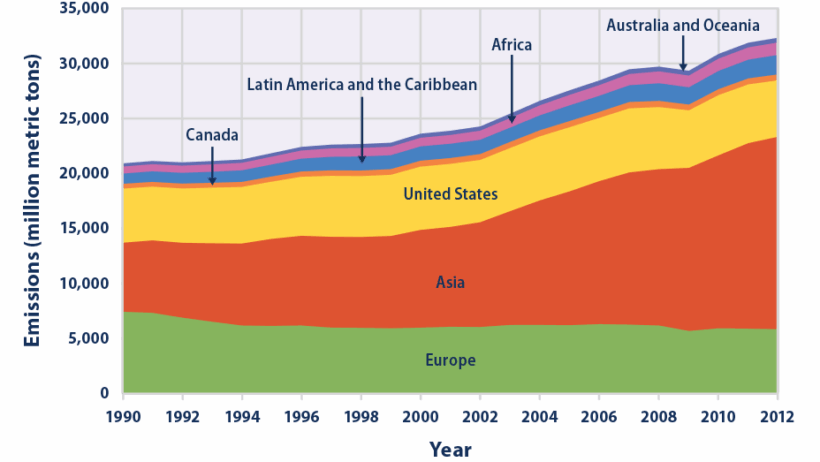Car emissions represent one of the predominant sources of greenhouse gases, significantly contributing to climate change and global warming. The transportation sector, particularly personal vehicle use, is a critical area of concern. Understanding the relationship between car emissions and climate change is pivotal for environmental awareness and policy formulation. This discourse will delve into the expansive implications of car emissions on our planet’s climate, explore the various types of emissions produced, and propose actionable steps for mitigating individual impacts.
To comprehend the profound effects of car emissions on the environment, it is essential to explore the primary substances emitted by vehicles. The two major contributors are carbon dioxide (CO2) and methane (CH4), both potent greenhouse gases. CO2 is predominantly released through the combustion of fossil fuels like gasoline and diesel. The sheer volume of CO2 emitted is staggering; it is estimated that the average passenger vehicle releases approximately 4.6 metric tons of CO2 annually. Furthermore, the transportation sector accounts for about 29% of total greenhouse gas emissions in the United States alone.
Methane, although released in smaller quantities than CO2, is far more effective at trapping heat in the atmosphere—about 28 times more powerful over a century. Methane is primarily released from the production and transport of coal, oil, and natural gas, in addition to other transportation-related activities. While the spotlight often shines on CO2, the cumulative effects of various emissions warrant thorough investigation and mitigation strategies.
The impact of car emissions extends beyond mere calculations of greenhouse gases. One notable consequence is the exacerbation of air quality issues, leading to health complications such as respiratory diseases, cardiovascular issues, and increased mortality rates. Areas with heavy traffic often experience elevated levels of pollutants such as nitrogen oxides (NOx) and particulate matter, causing dire health implications for residents. Research has demonstrated a clear correlation between high vehicle emissions and increased hospital admissions due to asthma and other respiratory ailments.
A pivotal consideration in the discourse on car emissions is the differentiation between conventional internal combustion engine (ICE) vehicles and alternative fueling options. Conventional vehicles primarily rely on gasoline or diesel, perpetuating the cycle of fossil fuel dependence and climate change. In contrast, electric vehicles (EVs) and hybrid models have garnered attention as viable alternatives. EVs offer a substantial reduction in CO2 emissions, particularly when charged using renewable energy sources such as solar or wind. While the production of batteries poses its environmental challenges, the benefits of reduced tailpipe emissions present a compelling case for transitioning to electric mobility.
Another innovative solution gaining traction is carpooling and ridesharing. By reducing the number of vehicles on the road, carpooling can significantly diminish emissions. Not only does sharing rides lead to fewer cars, but it also maximizes vehicle occupancy rates, thereby enhancing fuel efficiency. Additionally, public transportation systems offer an eco-friendly alternative to personal vehicle use, as buses and trains can accommodate numerous passengers simultaneously, leading to reduced per capita emissions.
Moreover, government policies play a crucial role in shaping the landscape of car emissions and climate change. Stricter emissions standards target the reduction of pollutants from vehicles, compelling manufacturers to innovate cleaner technologies. Initiatives such as tax incentives for EV purchases, construction of charging infrastructure, and investment in public transportation systems are tangible steps toward minimizing the impact of car emissions. Advocating for comprehensive climate policies at local, state, and national levels is crucial in galvanizing collective efforts to combat climate change.
Individuals also possess the power to effect change through conscious choices. Opting for biking or walking for short trips significantly reduces personal carbon footprints, as does maintaining vehicles properly to ensure optimal fuel efficiency. Regular maintenance such as oil changes, tire pressure checks, and using appropriate fuel types can lead to reduced emissions and improved gas mileage. Additionally, integrating eco-driving techniques—such as smooth acceleration and braking—can substantially lower fuel consumption.
Education and awareness are integral components of addressing the challenge posed by car emissions. Informing oneself and others about the environmental ramifications of car use encourages more sustainable choices among communities. Participating in local environmental initiatives, attending community forums, and promoting the importance of public transport can inspire collective action. The melding of individual actions and community engagement can foster a culture of sustainability that encompasses broader societal change.
The advent of technology provides another avenue for mitigating the impact of car emissions. Advancements in fuel-efficient technologies, smart traffic management systems, and telecommuting options through digital platforms have the potential to reshape commuting patterns. Companies encouraging remote work reduce employee commuting, directly reducing the aggregate emissions from transportation. Furthermore, innovations such as autonomous vehicles and advanced public transport systems can revolutionize how people traverse urban landscapes, aligning mobility services with sustainability goals.
In conclusion, understanding car emissions and their contribution to climate change is paramount in the quest for a sustainable future. Through collective efforts—ranging from governmental initiatives to individual choices—the daunting challenge posed by transportation emissions can be addressed. Each small step contributes to a greater journey toward reducing greenhouse gas emissions, improving air quality, and combating climate change. It is imperative to act now; the stakes have never been higher, and the time for change is undeniably upon us.








